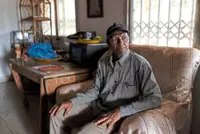Palestinians inspecting the damage of buildings that were hit by Israeli airstrikes in the Shati refugee camp, Gaza City. — AP
Israel’s military offensive has turned much of northern Gaza into an uninhabitable moonscape.
Whole neighbourhoods have been erased. Homes, schools and hospitals have been blasted by airstrikes and scorched by tank fire.
Already a subscriber? Log in
Save 30% OFF The Star Digital Access
Cancel anytime. Ad-free. Unlimited access with perks.





